The Abdominal Lift and Tuck is one of the most effective early labor techniques for engaging the baby in the pelvis. This technique is to help the baby into the pelvis and through the pelvic brim (the baby may be -3 or -2 station).
The Abdominal Lift was introduced by Janie McCoy King, a Texas Engineer who wrote Back Labor No More. I learned it from Penny Simkin at her Birth Doula Training. I added the words “and tuck” to remind the user to tuck their pelvis. By this, I mean do a standing Posterior Pelvic Tilt (flatten the lower back).
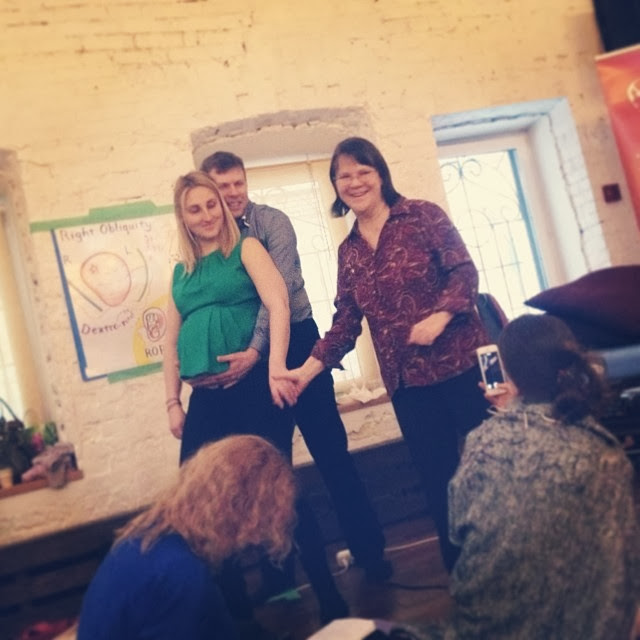
Note: The Abdominal Lift and Tuck must be done during a contraction. You will want to move into position as soon as—but not before—the contraction starts. If you start too late it will be uncomfortable, so just wait to start with the following contraction.
Learn step-by-step how to do the Abdominal Lift and Tuck by watching Gail Tully teach it to pregnant parents in our Spinning Babies® Parent Class video. Parents across the globe are using these techniques for comfort in pregnancy and easier birth—and they’re working! Available on DVD or digital download.
If you stand against a wall doing the Pelvic Tilt, the space behind your lower back will flatten and you won’t have room to reach your hand behind yourself while doing it. Performing the Abdominal Lift this way allows you to concentrate on lifting the belly and relaxing through the contraction. Do this through ten contractions to feel the difference in comfort.
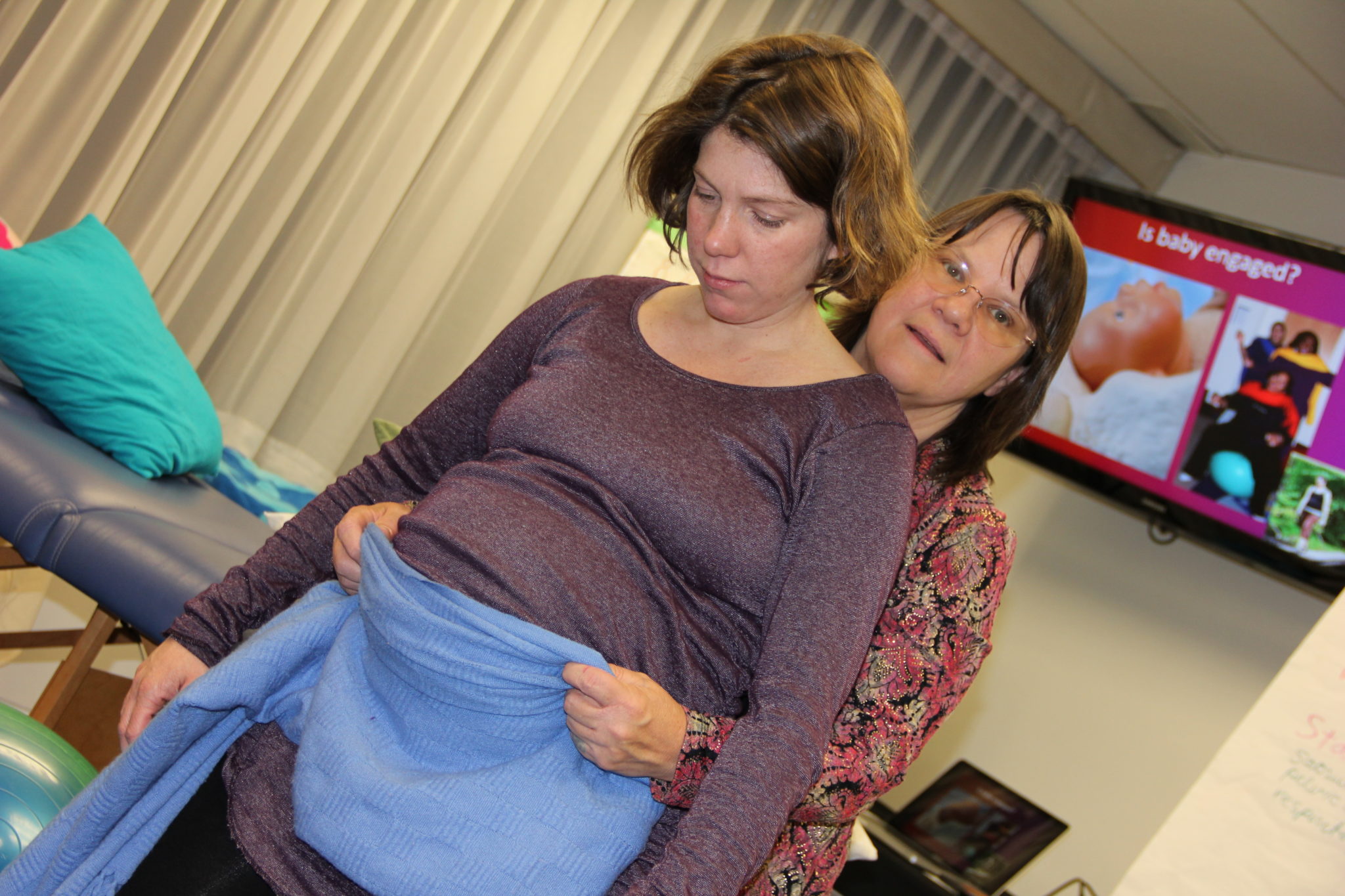
The Abdominal Lift and Tuck will encourage labor contractions to be closer together and get stronger when they have been at one strength for a long time. Or, when dilation is not increasing or when you’re experiencing an achy back labor. Either way, the resulting flexion of the baby’s head will improve the labor progress and relieve the backache. It can be used in latent or pre-labor to get active labor underway.
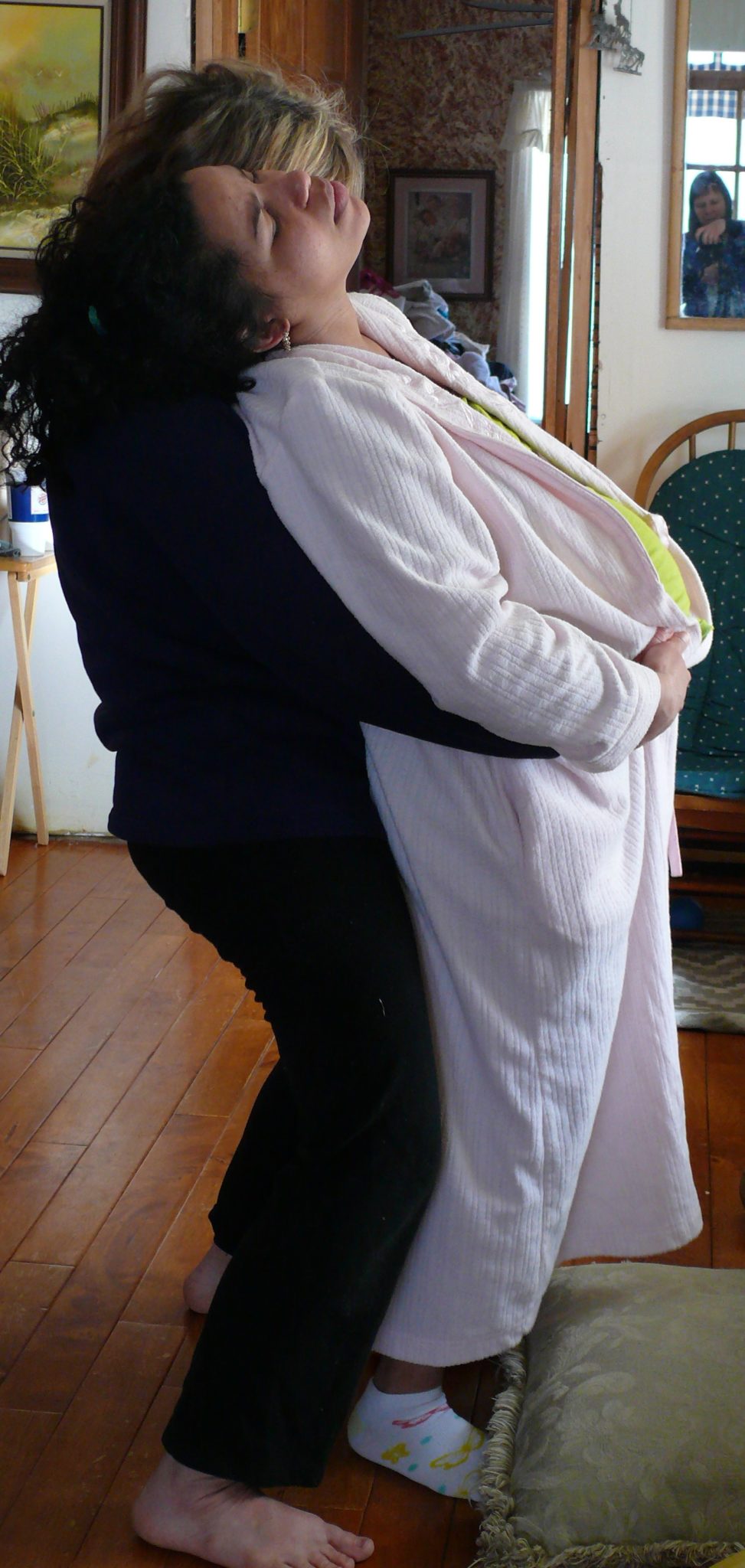
This dramatic birth story is shared here with permission by the doula:
Thanks to Spinning Babies®, I believe we spared a c-section in St. Louis tonight!
Tiny first-time mom had gestational diabetes and was induced with cervadil. Baby had never engaged in the pelvis, and mom had a posterior cervix and 0 dilation. When you have these conditions, the likelihood of having a vaginal delivery started by induction is statistically slim.
When I arrived at the hospital, they had just started pit [Pitocin, an artificial labor stimulant]. The nurse said she had made no changes, although she’d been contracting all morning, with stronger contractions about 30 minutes before I got there. The nurse also said she had little to no room in her pelvis.
I had two moms walk this exact path and both ended in c-sections. So I asked if mom would be willing to do Walcher’s, and understandably, she just couldn’t get to her back. So I asked if she’d be willing to kneel (which opens the brim) and allow me to do an abdominal lift on her with her next contraction. Now this mom was already very, very uncomfortable on pit, but she was willing. And she DID it…and later said something like, “I thought I was going to die, or split open” or something like that.
Well, this mama moved her baby!! She started making new vocalizations, so the nurse checked her 30 minutes later, and she was at a FIVE with baby now engaged in the pelvis! She went from 0 dilated posterior cervix to 5 centimeters dilated with an anterior cervix in 60 minutes with just a little pit, a strong will, and a kneeling abdominal lift!!!!!
And THIS never, never could have happened had she got an epidural early on. Not in St. Louis hospitals anyway. This mama worked so hard and finally gave birth … VAGINALLY!
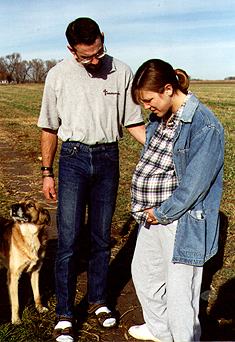
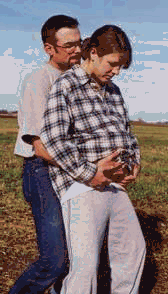
I helped Barb and Tom (pictured above) try an Abdominal Lift and Tuck to move their labor along. It was Barb’s fourth baby. The baby was occiput posterior and early labor had been going on longer than expected without progressing for several hours. Barb was interested in helping the baby rotate.
As her midwife, I suggested an Abdominal Lift and Tuck to help the baby tuck her chin. Tucking the chin is almost always necessary for the head to rotate because of the shape of our heads.
Barb was hoping her baby would rotate to the left occiput transverse to drop into the top of her pelvis. Ten contractions later, doing these abdominal lifts and tucks, gave the baby that chance.
For additional education to even further enhance your pregnancy and labor preparation, shop our extensive collection of digital downloads, videos, DVDs, workbooks, and more.